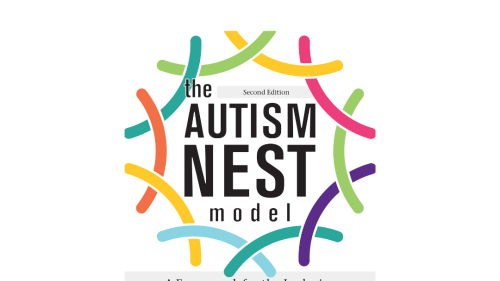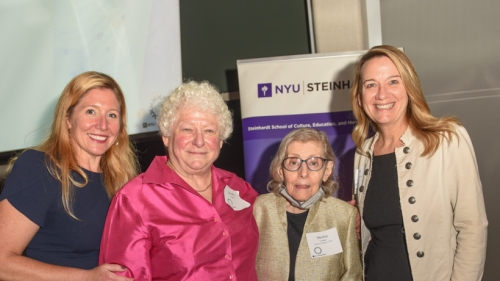The Nest Support Project at NYU Metro Center trains, supports, and empowers public school communities and institutions to implement our collaborative, strengths-based model of equitable and inclusive education. NYU Nest Support Project’s work is directly informed by the perspectives and experiences of autistic self-advocates in order to create systems change in schools that foster self-determination in students.
This driven and innovative team is extremely proud to announce the publication of their new book, The Autism Nest Model: An Inclusive Education Framework for Autistic Children!

This book represents both the longevity and the continual innovation of the Nest Model, as well as the incredible impact the Nest Model has had over its 20 plus year implementation. The book is co-edited by the current Executive Director of the NYU Nest Support Project, Allison Graham Brown, and one of the co-founders of the Nest Model, Dr. Shirley Cohen. Chapter authors include both editors, the co-founder and former Executive Director Dorothy Siegel, as well as several experts from the NYU Nest Support Project team.

From left to right, Allison Graham Brown, Nest Support Project, Executive Director; Dorothy Siegel, former Nest Support Project Executive Director; Dr. Shirley Cohen, co-founder of the Nest Model; and Kristie Patten, NYU Professor, Counselor to the President.
The Autism Nest Model is the much-praised program adopted by the New York City public school system that has successfully educated thousands of autistic children and their neurotypical peers over the past two decades. The second edition of The Autism Nest Model describes the people, processes, program structures and strategies essential for producing strong, positive educational outcomes for autistic children. Also adopted by the top-ranked Danish school system, this well-researched and evidenced-based model incorporates illustrations of strategies for addressing common areas of difficulty such as sensory functioning, social development and self-regulation, and builds on areas of strength. Its comprehensive approach is lauded by families, students, teachers, therapists and school leaders alike. By laying out the process of developing the model, its philosophy, strategies, and practical examples, the second edition of The Autism Nest Model book makes this successful approach available to a wide audience.
Formulated in response to the severe shortage of educational programs for school age autistic children, the Nest Model helps schools create inclusive settings in which children engage comfortably and successfully. The Nest Model is designed for use in grades K-12. However, this book focuses on the elementary version which serves students in K-5th grade.
The original book, The ASD Nest Model, presented the Nest Model from conception in 2001 through development and implementation in 2012. It established the foundation of the Nest program from which the current model evolved. This second edition covers the entire period of 20 plus years from conception to the present, showcasing the evolution of the model over that period. The book's change in title from The ASD Nest Model to The Autism Nest Model is indicative of the evolution not only of language but also the understanding and practice that the new edition reflects.
This new edition of The Autism Nest Model has three parts.
Part One highlights the foundational strategies and supports of the model during its first ten years, including the partnership between the New York City Public Schools and the Nest Model developers.
Part Two describes the ongoing development and evolution of the program across the following 10 years, with a focus on neurodiversity-affirming practices, including what the authors have learned from the autistic community, updated research, and changes in the field.
Part Three presents challenges to scaling the model, and considerations for responding to those challenges, while highlighting the outstanding successes of the Nest program across two decades.

